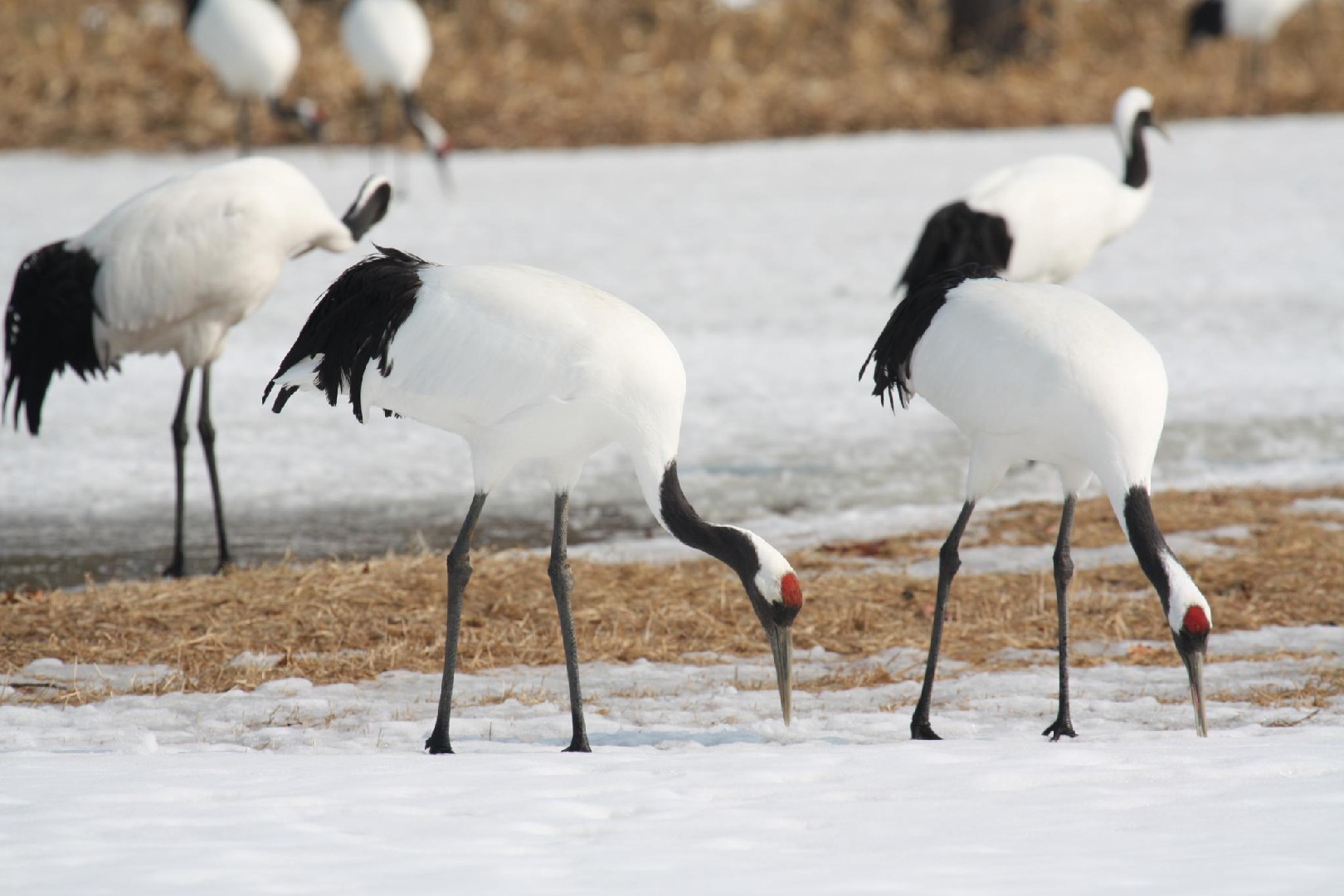Red-crowned Crane
A species of Cranes, Also known as Japanese Crane Scientific name : Grus japonensis Genus : Cranes
Red-crowned Crane, A species of Cranes
Also known as:
Japanese Crane
Botanical name: Grus japonensis
Genus: Cranes
 Photo By Alastair Rae , used under CC-BY-SA-2.0 /Cropped and compressed from original
Photo By Alastair Rae , used under CC-BY-SA-2.0 /Cropped and compressed from original Description
Adult red-crowned cranes are named for a patch of red bare skin on the crown, which becomes brighter during mating season. Overall, they are snow white in color with black on the wing secondaries, which can appear almost like a black tail when the birds are standing, but the real tail feathers are actually white. Males are black on the cheeks, throat, and neck, while females are pearly gray in these spots. The bill is olive green to greenish horn, the legs are slate to grayish black, and the iris is dark brown. This species is among the largest cranes, typically measuring about 150 to 158 cm (4 ft 11 in to 5 ft 2 in) tall and 101.2–150 cm (3 ft 4 in–4 ft 11 in) in length (from bill to tail tip). Across the large wingspan, the red-crowned crane measures 220–250 cm (7 ft 3 in–8 ft 2 in). Typical body weight can range from 4.8 to 10.5 kg (11 to 23 lb), with males being slightly larger and heavier than females and weight ranging higher just prior to migration. On average, it is the heaviest crane species, although both the sarus and wattled crane can grow taller and exceed this species in linear measurements. On average, adult males from Hokkaidō weighed around 8.2 kg (18 lb) and adult females there averaged around 7.3 kg (16 lb), while a Russian study found males averaged 10 kg (22 lb) and females averaged 8.6 kg (19 lb); in some cases, females could outweigh their mates despite the males' slightly larger average body weight. Another study found the average weight of the species to be 8.9 kg (20 lb). The maximum known weight of the red-crowned crane is 15 kg (33 lb). Among standard measurements, the wing chord measures 50.2–74 cm (19.8–29.1 in), the exposed culmen measures 13.5–17.7 cm (5.3–7.0 in), tail length is 21.5–30 cm (8.5–11.8 in), and the tarsus measures 23.7–31.9 cm (9.3–12.6 in). 
Size
1.5 m
Colors
Black
Red
White
Life Expectancy
25 years
Nest Placement
Ground
Feeding Habits
Red-crowned Crane exhibit omnivorous feeding habits, consuming rice, various plants, fish, amphibians, snails, small reptiles, and mammals. Preferring high protein and low fiber, they forage in wetlands and fields, utilizing rapid strikes for aquatic prey and vigorous shaking to tear larger food items.
Habitat
Red-crowned Crane's habitat includes wetlands, marshes, and riverine environments in temperate East Asia. They breed in marsh areas rich in reeds and sedges, and migrate to diverse wintering grounds such as freshwater wetlands and cultivated paddy fields, adapting their diet to available resources. Open meadows and boggy areas are also crucial to their year-round and breeding ranges.
Dite type
Omnivorous
Migration Overview
The population of red-crowned cranes in Japan is mostly non-migratory, with the race in Hokkaidō moving only 150 km (93 mi) to its wintering grounds. Only the mainland population experiences a long-distance migration. They leave their wintering grounds in spring by February and are established on territories by April. In fall, they leave their breeding territories in October and November, with the migration fully over by mid-December. 
General Info
Feeding Habits
Bird food type
Species Status
ENDANGERED. Global population estimated in 2009 to number c. 2750 individuals (range 2800–3300).